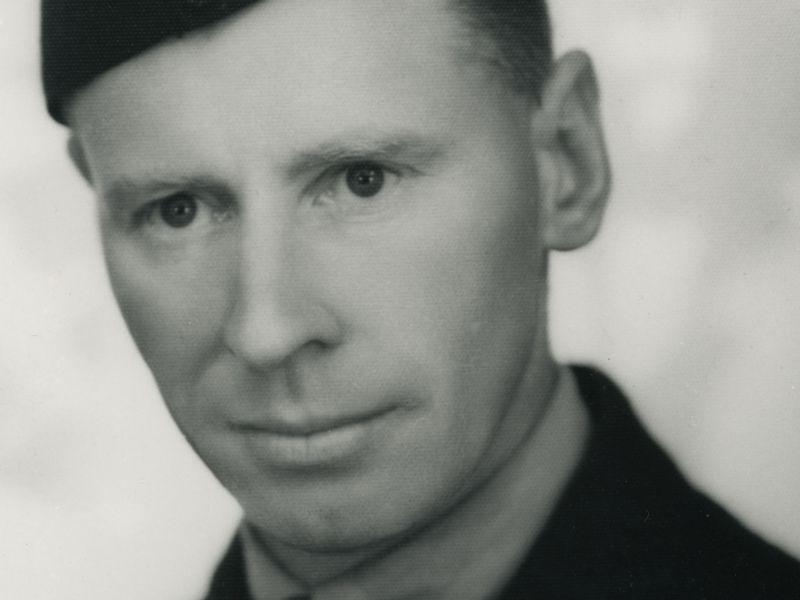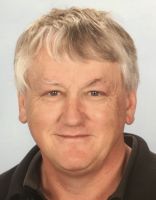William Ivan Meyers
William Ivan Meyers was born on the 4th of June 1907 at Bethanga in Victoria. He was the second eldest of five children for Arnold and Evangeline (née Post). Sometime during William’s first few years the family moved to Corryong and it was here that his three sisters were born. William and his older brother Gordon would eventually move to Walwa during the 30s and find work as labourers. William gained private experience as a mechanic, which no doubt would help him during his time in the RAAF. He was also, according to his enlistment application, a member of the Walwa Rifle Club for a period of ten years.
William enlisted in the RAAF at No. 1 Recruiting Centre at Melbourne on the 8th of August 1940. Amongst his enlistment papers is a Confidential Inquiry Form which lists his character as “held in high esteem, sober and respectable.” It also indicates that there is no evidence whatsoever of William ever being a member of a communist organisation.
William was first sent to the No.1 Recruit Depot at Laverton, near Point Cook in southern Victoria where he received his normal recruit training. Next came a four month course at No. 8 Armourers Course at Point Cook. His service records that he only received a “Fair” rating here due to spend some time in hospital, although the reason he was hospitalised is not recorded. After completing the No.9 Armourers Course, once again at Point Cook, he was sent to the No. 7 Catalina Conversion Course for armourers at Rathmines, the main seaplane base in Australia. On the 29th of December 1941 he was awarded his Air Gunners Badge. In late January of 1942 William was posted to Port Morseby. Initially he was written down as being posted to No. 24 Squadron RAAF which had been posted to Rabaul in New Britain. Unfortunately 24 Squadron had been caught up in the disastrous affair following the Japanese invasion with many of their aircraft destroyed. Instead, William was posted to No. 20 Squadron which was based in Port Moresby.
20 Squadron RAAF, was formed on the 1st of August 1941 at Port Morseby in New Guinea. The unit’s first task was to conduct extensive seaward patrols. For these they were equipped with Catalina aircraft and Empire flying boats. The squadron resisted Japanese landing forces at Kavieng and Rabaul in late January of 1942 and kept up with night bombing operations on these two targets throughout the year. Surprise attacks by the Japanese on Port Morseby during March resulted in the loss of several Catalinas, so the squadron relocated to Bowen in Queensland during May. For the remainder of that year the squadron conducted seaward reconnaissance throughout the New Guinea area, the Solomons and New Caledonia.
In the early hours of the 7th of April 1943, 311 Radar Station RAAF situated near the far-north Queensland town of Aurukun sighted a Japanese submarine. This sighting escalated to a confrontation as the craft approached their beach frontage and jammed the stations signal. The RAAF personnel manning the station felt worried as they had no escape from the craft, their base being surrounded by crocodile infested marshes and the Archer River. They felt intense relief when the enemy departed after being attacked by the Australians from the shoreline.
In the meantime, Catalina A24-41 and another Catalina A24-42 flown by Sqn/Ldr David Vernon took off from Cairns at 0505 hours to search an area covering the south east portion of the Gulf of Carpentaria during the hours of darkness. Their instructions were to refuel at Horn Island on completion of their patrol. There were no signals received from the aircraft until at 1616 hours on 7 April 1943, a signal was intercepted addressed to Port Moresby from 3Z6U "Am on fire, Aircraft on fire". No further signal was received. From 1620 hours on 7 April 1943 until 1706 hours on 7 April 1943 (GMT) the aircraft was continually called by Port Moresby, Cairns and Garbutt but without success.
An extensive search was carried out by three Catalinas and two Boomerangs from dawn on the 8 April 1943. An oil or fuel slick was seen in position 15 degrees and 5 minutes South, 140 degrees and 4 minutes east, by all three Catalinas. Sqn/Ldr Vernon and F/Lt Shields, the Captains of two aircraft were certain that it was the type of slick left by an aircraft having crashed at sea. As this was in the position near to where the aircraft would have been at the time it sent its signal, there seemed little doubt that the Catalina had crashed in that position. No wreckage of any description was seen. Visibility during the period of the search was excellent, weather conditions good, and the sea was smooth. As the area was completely covered, the search was abandoned at dusk on 8 April 1943.
The crew members of A24-41 were: Pilot Officer Leonard George Adamson (400549) (Wireless Air Gunner), Flying Officer Leopold Albert Elkington (411576) (Second Pilot), Flying Officer James David Fisk (408826) (Wireless Air Gunner), Flight Lieutenant Clement William Haydon (407237) (Pilot), Fying Officer John Goulburn Lancaster (401847) (Navigator), Corporal Noel Clifford Marshall (32072) (Air Gunner), Corporal William Ivan Meyers (11814) (Air Gunner), Corporal Malcolm James Mutton (28263) (Air Gunner), Sergeant Lawrence Neild Oppy (412281) (Third Pilot), Leading Aircraftman James Augustus Scott (22604) (Fitter IIE) and Sergeant Derek Alan Wray (402714) (Wireless Air Gunner).
William is remembered on the Australian War Memorial Roll of Honour, , the Walwa War Memorial, the Sydney Memorial (Sydney War Cemetery) Rookwood, the Catalina Base Memorial Rathmines NSW and the Rathmines Memorial Bowling Club, NSW. For his service, he was awarded the the Pacific Star, the Defence Medal, the War Medal 1939-1945 and the Australian Service Medal 1939-1945.

 Stephen Learmonth
Stephen Learmonth